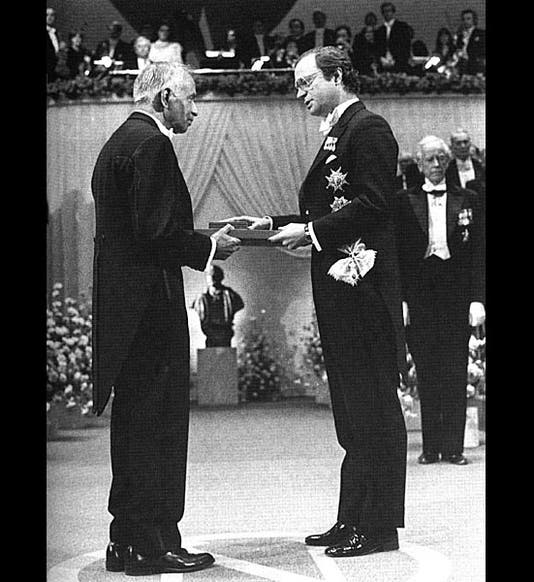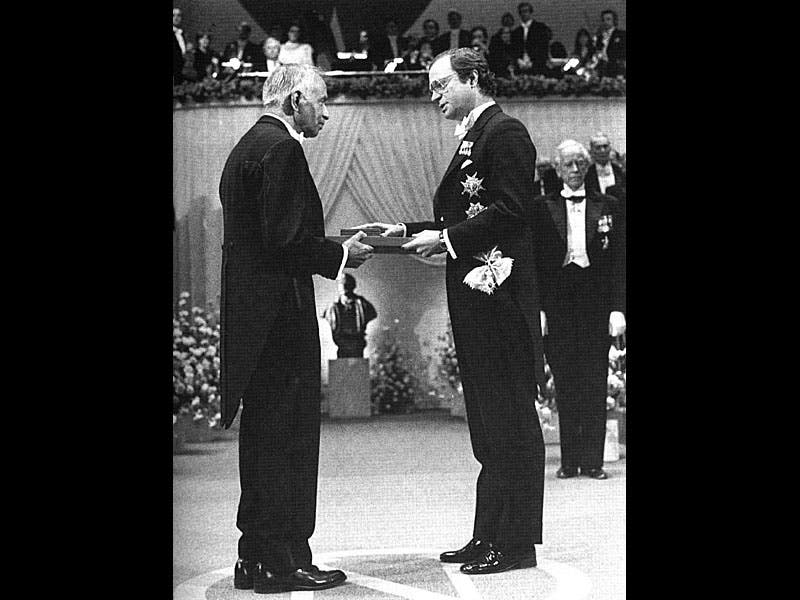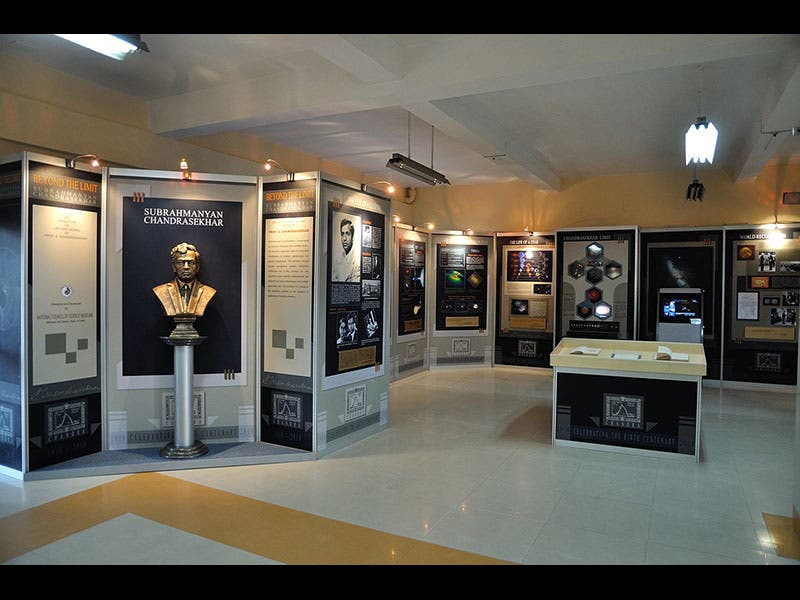Scientist of the Day - Subrahmanyan Chandrasekhar

Linda Hall Library
Subrahmanyan Chandrasekhar, an Indian physicist, was born Oct. 19, 1910. Chandra, as he was universally known, came to Trinity College, Cambridge, at the age of 20 to work on his PhD (second image), following in the footsteps of the brilliant Indian mathematician Ramanujan. Chandra worked on the physics of stars. At that time (the early 1930s), no one knew what powered the stars, but physicists were nevertheless able to produce quite elaborate models of how massive stars should behave. Stellar astrophysics was pioneered by Arthur Eddington in the 1920s; the problem faced by his successors was to apply the new quantum physics and relativity theory to stellar interiors.
Chandra worked on white dwarf stars, which had been known for a long time but which were not well understood. In 1930, while still on the ship from India, Chandra discovered that there was a limit to the size of white dwarf stars; if they had a mass more than 1.4 times the mass of the sun, they would be gravitationally unstable and would collapse. No one paid much attention to his discovery when it was announced, much to Chandra's surprise, and after he presented another version of his paper in 1935, he was, to his even greater surprise, scathingly criticized and humiliated in public by Eddington himself, who maintained that a massive star occupying no space at all was a ridiculous and impossible notion.
Chandra was so upset that he left England for the University of Chicago, where he would spend the last 55 years of his life. We now know that Chandra was right--white dwarfs can be only so big, and once they exceed the "Chandrasekhar limit", they shrink to either neutron stars or black holes. Many historians think that, had Eddington not been so blinded by his own personal vision of how nature ought to work, and had he accepted Chandra's work as the brilliant piece of physics it was, then black holes would have been discovered in the 1930s, instead of the 1960s. Chandra received the Nobel Prize in Physics in 1983 for his work on stellar structure (first image).
When NASA conceived its “Great Observatories” program in the 1970s, whereby they would place in orbit telescopes that were sensitive to visible light, infrared, ultraviolet, and X-rays, they decided to name each telescope after an eminent astronomer or astrophysicist; Edwin Hubble got the nod for the visible-light telescope, and Chandra became the namesake for the X-ray telescope. The Chandra X-ray Observatory (third image), or CXO, was launched in 1999 and has produced many stunning x-ray images of deep-space objects, including the view above of Tycho’s star of 1572, a supernova remnant (fourth image).
In 2011, Science City in Kolkata, West Bengal, the largest science center/museum in India, mounted an elaborate exhibition to honor Chandra (fifth image). We are unable to determine if it was a temporary or a permanent installation—we hope the latter.
We have a number of works by Chandrasekhar in our Collections, including a first edition of his first book, An Introduction to the Study of Stellar Structure (1939, sixth image).
Dr. William B. Ashworth, Jr., Consultant for the History of Science, Linda Hall Library and Associate Professor, Department of History, University of Missouri-Kansas City. Comments or corrections are welcome; please direct to ashworthw@umkc.edu.











